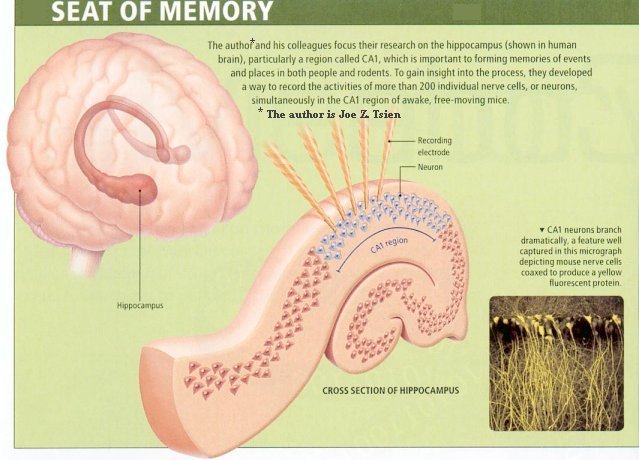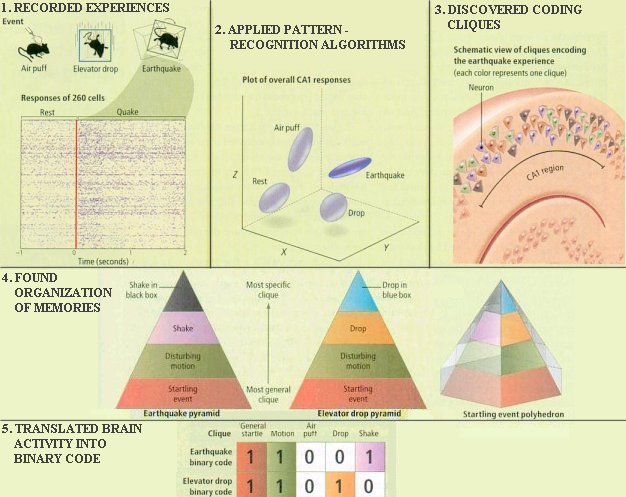Hippocampus seat of memory
pre existing proteins and alterations of pre existing connections. The short term process does not involve ongoing macromolecule synthesis. The effect wears off with time or repeated applications with no untoward happening. On the other hand, long term process involves a structural change which is not seen in the short term. In long term processes, there is a growth in new synaptic connections by sensory neurons onto follower cells. The growth of new synaptic connections is activated by the gene expression resulting in new protein synthesis.At the macromolecule level, it is known that the neurotransmitter involved in the processes is the serotonin. A puff of serotonin alone can substitute for the siphon shock. It is shown further that the serotonin triggers the release of the second chemical messenger called cyclic-AMP. It activates an important type of enzyme called a kinase, which modifies the properties of particular target proteins by adding a phosphate molecule to them; the term for this is protein phosphorylation. The target for this modification in the sensory neuron is a potassium channel protein. It is mentioned earlier that a potassium channel is important in the downward phase of the action potential. The net result of phosphorylation is a prolongation of the action potential in the sensory neuron and so more neurotransmitter is released by the sensory neuron. Thus the sensory neuron's synapse with the gill motor neuron is strengthened. In short-term memory, special enzymes quickly remove phosphates from the proteins and return them to their original state, restoring the synaptic strength to its lower pre-sensitized level. However, following repeated serotonin delivery, the level of cAMP-activated kinase is much higher and this allows the crucial step in the formation of long-term memory to occur. This crucial step is the transport from the synapse to the cell body of kinase molecules that have been activated by c-AMP. Once in the cell body the activated kinases enter the nucleus and start to regulate the expression of particular genes. In Aplysia, proteins that result from this process of gene activation are transported back to the synapse where they are used to maintain the strength of synapses already affected by local effects of c-AMP and to grow new synaptic connections. So in Aplysia (as in other animals) the conversion of a short-term into a long-term memory involves the reinforcement of the short-term changes in synaptic strength and the growth of new synapses, both of which require the synthesis of new proteins.

 It is reported in 2007 that the seat of
memory has been pinpointed in mouse. By monitoring 260
neurons in the hippocampus (Figure 29b), researchers have
discovered that different experience is recorded in
different area called "clique", which can be categorized
from very general to very specific. Furthermore, such brain
activities can be translated into binary codes (Figure 29c).
Supposedly, we can read the mind from such codes and tell
what it is
It is reported in 2007 that the seat of
memory has been pinpointed in mouse. By monitoring 260
neurons in the hippocampus (Figure 29b), researchers have
discovered that different experience is recorded in
different area called "clique", which can be categorized
from very general to very specific. Furthermore, such brain
activities can be translated into binary codes (Figure 29c).
Supposedly, we can read the mind from such codes and tell
what it is